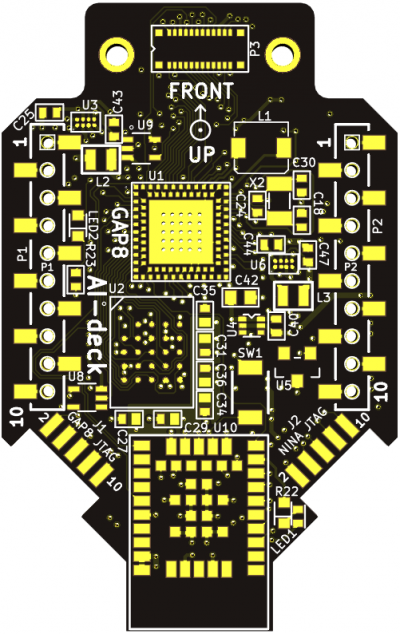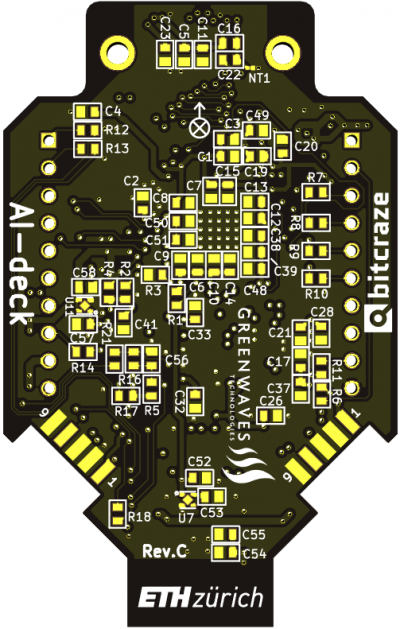Products
-
-
- Accessories
- Breakout boards
This page has deprecated and moved to the new documentation framework of the main Bitcraze website. Please go to https://www.bitcraze.io/ and go to the menu 'products'.
The AI-deck is built around the GAP8 RISC-V multi-core MCU build for AI on the edge purposes. Adding to this a QVGA monocrom camera and a ESP32 WiFi MCU. This all together creates a pretty good platform to develop low power AI on the edge for a drone.


There are two Cortex-M 10pin (2×5, 1.27mm pitch) JTAG interfaces on the AI-deck so that both the GAP8 and the ESP32 can be programmed and debugged easily. To not build too much on the height they are mounted on the edge of the PCB. The GAP8 JTAG is located to the left and the ESP32 JTAG to the right when viewing the board from top. Note that pin-1 is located to the left, marked with a 1 on the bottom side of the board.
The GAP8 SDK has recently added support for OpenOCD and thus many debuggers with a ftdi interface should be usable. We have tested JLink and Olimex ARM-USB-TINY-H with success. The STLink v2 will not work as it can only debug Cortex cores.
Use a 2×5 pin 1.27mm (0.05“) flat cable together with our debug adapter or e.g. adapter such as the Olimex ARM-JTAG-20-10, is needed to connect the debugger and the AI-deck.